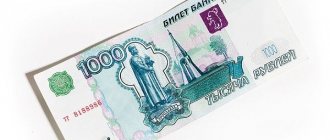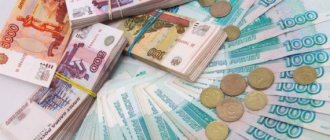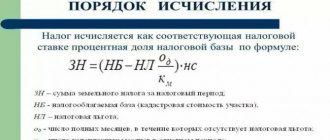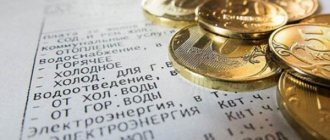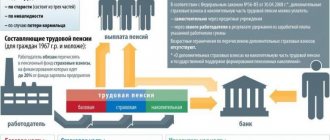Home > Pension insurance subjects > Federal beneficiaries > Categories
- Collapse
- Expand
Article navigation
- Who are federal beneficiaries? War participants and residents of besieged Leningrad
- Disabled people and disabled children
- Victims of the Chernobyl disaster
- Other categories of beneficiaries
- Monthly payments (EDV)
8 529
The right to benefits for certain categories of citizens, i.e. receipt of social assistance from the state is determined by Federal Law of the Russian Federation No. 178-FZ of July 17, 1999 “On State Social Assistance”.
According to this law, beneficiaries are divided into two types:
- federal;
- regional.
Payments of a social nature to federal beneficiaries are carried out by the Pension Fund of Russia, in contrast to regional ones, to whom social assistance is provided by the authorities of the constituent entities of the Russian Federation (social protection authorities).
Legislative norms regulating the grounds for receiving benefits
The list of privileges is determined by belonging to different categories of beneficiaries. State support is provided:
- Persons with limited body functions - disabled people of all groups and disabled children.
- Participants and disabled people of the Second World War, veterans of the Great Patriotic War.
- To juvenile prisoners of the Second World War.
- To family members of law enforcement officers who died while on duty.
- Liquidators of the Chernobyl Nuclear Power Plant and other man-made disasters, residents of exclusion and resettlement zones.
- Persons exposed to radiation during nuclear weapons testing.
- To the heroes of socialist labor, the USSR or the Russian Federation, full holders of the Order of Glory.
Persons classified as federal beneficiaries have access to a significant range of social services. Preferences are provided both in kind and in cash. Citizens receive privileges in the form of benefits, housing, discounts on housing and communal services, medical and sanatorium services, transport, labor and other benefits. The list of privileges depends on the established status.
Working pensioners and benefits
Quite often, people continue to work after retirement. The reasons for such actions are varied. Some people want to help their loved ones, some simply don’t have enough pension payments.
There is a list of benefits for retirees from employers:
- The right to receive administrative leave at any time during the year; old age pensioner – 14 days;
- WWII participant – 30 days;
- disabled – 60 days.
When hiring, a person must provide a pension certificate. An employment contract can be concluded for either an indefinite or an announced period, subject to the conditions specified by the Labor Code of the Russian Federation.
Benefits and compensation intended for persons with disabilities
A significant group of federal beneficiaries consists of persons with limited legal capacity. To assign a disability, it is necessary to obtain an opinion from the ITU commission. A certificate issued by an official body serves as the basis for receiving benefits.
The conditions for provision and support measures for people with disabilities are established by the Federal Law of November 24, 1995 No. 181-FZ. The amount of payments and the list of benefits in kind are provided depending on the degree of limitation of legal capacity. The assignment and payment of the EDV included in the NSO is carried out by the territorial branch of the Pension Fund of the Russian Federation, located at the place of registration of the person.
| Types of privileges and payments | Group I | Group II | III group | Explanations |
| Social pension benefit paid from April 2020 | 10 567,73 | 5 283,84 | 4 491,30 | The benefit is indexed annually in April |
| EDV when using NSO in kind | 2 701,67 | 1 580,26 | 1 041,20 | The amount is indexed annually in the month of February |
| EDV with NSO cash equivalent | 3 782,94 | 2 661,52 | 2 162,62 | Compensation is paid upon refusal of NSO |
Refusal from the NSO with replacement by monetary compensation is made at the request of the disabled person (his legal representative). The set, starting from February 2020, includes 3 types of services with a total cost of 1121.42 rubles. The list includes 863.75 rubles for the provision of medicines; 133.62 rubles on SCL; 124.05 rubles to pay for travel to the place of treatment.
If they have length of service and upon reaching retirement age, persons with disabilities can apply for an insurance pension. The recipient must choose one of the provided types of benefits.
9.7 trillion rubles
The total cost of all assigned social support measures for 2018.
How much is this? In 2020, the total income of the consolidated budget of the Russian Federation, which includes the federal budget, the budgets of regions and municipalities and the budgets of extra-budgetary funds, including the Pension Fund of the Russian Federation, amounted to 36.9 trillion rubles. In other words, of all taxes and fees that are collected in our economy, more than a quarter is sent back to the population in direct cash payments.
For five months of 2020, the amount amounted to 3.48 trillion rubles. However, it’s not evening yet - usually the peak of payments occurs in the summer and autumn.
Where does the money for social support come from?
The greatest burden for paying social benefits, pensions, subsidies and various benefits is borne by regional extra-budgetary funds. These are branches of the pension fund, social insurance funds and compulsory health insurance funds. Over the year, they paid beneficiaries 6.26 trillion rubles. In second place are direct payments from the federal budget – 1.72 trillion rubles. The budgets of the constituent entities spent 1.46 trillion rubles, and the budgets of municipalities spent only 269.88 billion rubles. However, if we talk about the source of money for payments, it is difficult to name leaders here. Pension funds receive transfers from the federal budget, and the federal budget is filled with taxes paid by the regions. So everything is interconnected here.
How many beneficiaries are there in Russia?
Social programs provided to people with disabilities
Persons with limited legal capacity have significant privileges in the field of medical care, taxation, preventive and sanatorium treatment. Persons receive the right to be provided with land plots, ramps, parking lots, and priority allocation of places in kindergartens.
| Types of privileges provided | Features of receiving | Add-ons |
| Providing medications and rehabilitation equipment. The list of medicines is approved at the government level | Non-working disabled people have the right to receive free medicines or, if employed, purchase them at a discount | Medicines and rehabilitation products are issued as prescribed by the attending physician. |
| Tax benefits | Disabled people have the right to benefits in the field of property and land taxes | The right to preference must be declared to the Federal Tax Service office |
| Discounts for utility bills | Disabled people of groups I and II are entitled to a 50% discount. Group III disabled people can use the benefit upon reaching a certain age and living alone | Persons with a share of utility bills in total family income of more than 22% may qualify for compensation in the form of a subsidy |
| Employment Privileges | Employers are required to create quotas for jobs for people with disabilities. The quota size is calculated based on the number of employees | Enterprises must report the availability of vacancies for persons with disabilities to the central employment center department. |
| Providing special working conditions | The employer must provide working conditions that correspond to the individual program | The rehabilitation program is being developed by the ITU commission |
| Places in preschool institutions | Parents with disabilities have the right to priority provision of places in preschool educational institutions | In most regions, individuals pay half the cost of child support fees |
| Providing ramps | Wheelchair users are required to provide accessible access to public places | Ramps are constructed according to standards established for size, height, angle of inclination, creation of intermediate platforms |
| Allocation of land to disabled people of all groups of legal capacity and families raising disabled children for special purposes | The plot is provided once, without an auction and for a fee. Purchase is possible if there are vacant plots in the register | There is a fee to purchase the plot. The area of the site depends on the purpose and standards established by regional regulations |
Important! Persons with disabilities must undergo re-examination within the time limits established by the ITU. Missing the deadline for visiting the commission or lack of grounds to confirm the group simultaneously entails loss of rights to benefits.
Federal and regional preferences for medicines
Federal and regional benefits for necessary medications are provided on different grounds and in unequal amounts. Thus, the local benefit depends entirely on the regional budget. The algorithm for filling out a prescription also differs: it is usually much faster and easier for a doctor to fill out a regional-level document. But in both cases, a prescription from the attending doctor is required, as well as a package of documents confirming the right to it.
Important!
A regional benefit for a certain medicine implies that it can only be received by a person belonging to this category. A federal beneficiary cannot receive it, and vice versa: as a regional beneficiary, you cannot count on free medicines from the state budget.
The procedure for obtaining federal/regional preferences
- A visit to the clinic and consultation with the attending physician about the possibility of receiving state or regional social assistance, in accordance with Federal Law No. 178.
- Clarify which category you belong to.
- If you are eligible for a federal preference, you will need to visit the territorial branch of the Pension Fund.
- The Pension Fund will have to write an application according to the sample and provide a package of documentation:
- passport/children's birth certificate;
- pension (SNILS);
- certificate of disability (optional) / other paper entitling you to a discount.
If you find yourself a regional beneficiary, then you do not need to go to the Pension Fund. Upon presentation of the same documents, you will be granted the right to preference in the same clinic. There you can also find out which medications are available at a discount and in which pharmacies.
Federal and regional beneficiaries: medication provision

Not everyone can count on medicines free of charge under the state program. At the federal level, the following can receive guaranteed assistance in the first place:
- Chernobyl survivors (liquidators, victims);
- WWII veterans, disabled people, home front workers, prisoners of fascism;
- participants in databases, wars;
- members of their families, if the serviceman has died;
- disabled people, children with disabilities;
- conscripts in service;
- military personnel, awarded with decorations, heroes of the USSR, Russian Federation, holders of the Order of Glory;
- heroes of social labor;
- blockade survivors and relatives of those killed in Leningrad;
- children under 3 years old;
- offspring of parents with many children under 6 years of age;
- low-income people, for example, pensioners.
Another criterion for obtaining the right to this preference is the presence of a certain pathology in a person. It is not necessary to be on the list of the above mentioned persons.
The doctor must write a prescription for free medications under federal preference in the presence of the following diseases:
After transplantation, subsidized medications are also provided.
How does a federal benefit differ from a regional one?
The first difference is the laws that establish and regulate social assistance. These are Federal Laws and regional legislative acts.
The second difference is the level of the budget financing the receipt of medicines.
Another nuance is the body involved in processing and issuing compensation: the Russian Pension Fund or local social security departments.
The names and quantities of federal drugs are actually closed. Any changes can be made to them only at the highest level. Regional lists of both medicines themselves and people. Those who can receive them are constantly changing, expanding or contracting.
The commonality between regional and federal beneficiaries is that some categories can simultaneously enjoy both preferences. The differences are that receiving assistance from the FB usually excludes similar funding from the Republic of Belarus and vice versa.
Who are the regional beneficiaries in 2020?
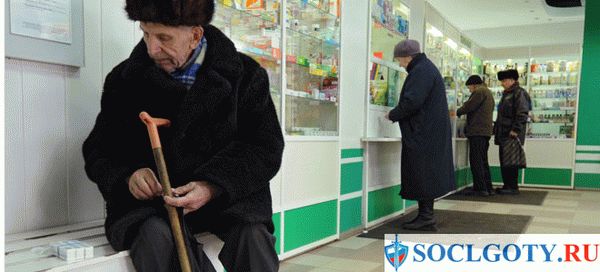
Usually these are low-income categories of citizens with many children. In some regions, for example, in St. Petersburg, these include all citizens with certain diseases.
The lists vary in the constituent entities of the Russian Federation, but most often these are the following persons:
- large groups of society;
- honorary donors;
- labor veterans;
- minor orphans and children left without the care of relatives;
- single pensioners over 80;
- teachers and health workers living in the village;
- infants up to 18 months.
Note!
Getting medications is not always easy. Thus, cancer patients experience difficulties in this regard; they lack painkillers. Funding for this category is insufficient, but it is still available, so you need to seek privileges, even if the local doctor himself does not offer to write a prescription and does not inform about free medications in a timely manner. You can obtain the necessary information yourself on the Internet or from an insurance company.
Preferences for participants and disabled people of the Second World War
The list of benefits for participants and disabled people of the Great Patriotic War is established by Federal Law No. 5-FZ dated January 12, 1995. Persons in 2020 are provided with:
- Monthly payment to WWII participants in the amount of 2,930.98 rubles, to disabled WWII veterans – 4,281.8 rubles. If you refuse the NSO or the amount increases by their cost, it is 4,052.4 and 5,403.22 rubles, respectively. The payment amount established since February 2020 is indexed annually.
- The right to improve housing conditions at the expense of the federal budget. The benefit is provided once.
- A 50% discount on payments for housing maintenance, utilities, and contributions for major repairs provided by beneficiaries and family members.
- Compensation for fuel and its delivery when living in buildings without central heating. The amount of payment is determined according to the prices established by regional acts.
- Preemptive right to install a telephone, admit cooperatives to membership, and allocate land.
- Receiving medical care in departmental institutions, free dental prosthetics, and providing vouchers to SKL.
- Extraordinary service in public places and social organizations.
WWII veterans are provided with burial at state expense. A funeral benefit in the amount of a three-month pension, the production and installation of a monument is paid to close relatives.
What benefits are there at the regional level in the Russian Federation?
Regional benefits are paid to citizens of the Russian Federation at the expense of the budget of the constituent entity of the Russian Federation. They operate in the territory of the corresponding region. The benefits in question can support citizens:
- representing low-income families;
- living alone and belonging to the category of low-income people;
- victims of political repression;
- rehabilitated;
- who are labor veterans.
In addition, Russian legislation allows constituent entities of the Russian Federation to include other categories of citizens in the lists of regional beneficiaries. The content of the benefits in question may vary. As a rule, they are represented by subsidies, benefits, sets of various social services, and cash payments.
Thus, a specific list of methods of social support for beneficiaries is established in the legislation of the regions of the Russian Federation. For example, for labor veterans in a constituent entity of the Russian Federation, it may be accepted to provide such benefits as:
- free medical care in various institutions, including dental ones;
- compensation for part of the costs of paying for housing and communal services;
- reimbursement of expenses for using public transport;
- discounts on housing costs.
For rehabilitated citizens, as well as for victims of political repression, regional benefits may be established such as:
- extraordinary free medical care in various institutions, including dental institutions;
- compensation for part of the costs of purchasing medicines;
- reimbursement of expenses for public transport, provision of vehicles for certain medical conditions;
- discounts on housing costs;
- compensation for part of the costs of paying for housing and communal services;
- the opportunity to use the services of institutions providing social assistance.
Benefits for combat veterans
Privileges for BD veterans are provided for by Federal Law No. 5-FZ dated January 12, 1995. The list of states and periods of hostilities, participation in which entitles a citizen of the Russian Federation to obtain status, is established separately. The list of grounds is updated and changes are made by federal laws. Social guarantees are provided to BD veterans and their family members after receiving the certificate. The document is drawn up on the basis of original certificates, extracts from personal files or archival requests.
BD veterans, depending on the basis of their status, have the right to preferences that are equivalent in basic provisions to the benefits of WWII participants. Persons have the right to departmental medical care, SKL, installation of a telephone and joining cooperatives out of turn. The guarantees include the provision of housing for persons registered before 2005, compensation for housing fees and a discount on contributions for major repairs within the social norm.
Payment of EDV to DB veterans is set at 1,622 rubles or 500.58 rubles when using NSO in kind. Individuals receive additional guarantees from employers in the form of a period without pay, annual leave at a convenient time of the year.
Design rules
If a person can count on different measures of regional support that duplicate federal assistance, then he will have to choose only one option for receiving benefits. Therefore, if a citizen can apply for a benefit at both levels, then he independently decides on choosing one optimal support measure.
The procedure for applying for any regional benefit is divided into the following stages:
- Initially, a citizen must obtain an official status that allows him to use various types of government assistance, for example, if a person is disabled, he will have to undergo an ITU examination;
- Next, documentation is prepared confirming that the applicant actually has the right to receive support from regional authorities, and they can be prepared in paper or electronic form;
- an application is drawn up in the form of the selected government agency to which the citizen applies;
- documents with the application are handed over to an employee of the organization, and most often you have to contact the social security department;
- then you just need to wait for the decision of the local administration, and the procedure is completed within 30 working days;
- After a set period of time, you need to come back to the organization’s branch for an official response.
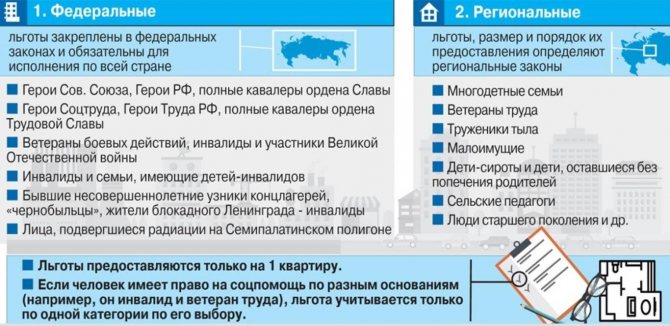
Photo aif.ru Numerous regional benefits are provided exclusively on an application basis, so if a citizen entitled to benefits does not independently apply for them, he will not be able to use state support.
If the assistance is in the form of a cash payment, the funds are transferred to the bank account specified in the application.
What documents are required?
To apply for any regional benefit, you will have to collect certain documentation. It depends entirely on the status of the citizen, on the basis of which he is assigned various support measures.
The following documentation is typically required:
- passport of the applicant and other members of his family;
- pension certificate confirming that the citizen is a pensioner;
- an extract from the house register containing information about who exactly is registered in a particular property;
- a certificate from the housing department, which includes data on the amount of payment for utilities;
- certificate of assignment to a specific disability group;
- a certificate from the employer, including information about the person’s income;
- other documents confirming the income of all members of one family;
- certificates proving that the citizen has the awards necessary to obtain the title of labor veteran;
- documents for various property owned by the applicant.
What are people most often fired for? Read more here.
Additionally, other documents may be required, so their exact number should be clarified directly with social security workers.
Measures to support people exposed to radiation
Citizens who have suffered from illnesses, radiation sickness or those injured in connection with the man-made accident at the Chernobyl Nuclear Power Plant are subject to the Federal Law of May 15, 1991 No. 1244-1. Victims of the accident also include those living in the exclusion zone, resettlement, or working in the territory with a special social status.
Particular attention is given to military personnel and those liable for military service who received radiation sickness, became disabled, or took part in the liquidation of the consequences of the accident. Payments to disabled people include compensation for damage to health. Disabled people of groups I and II receive compensation in the amount of 1,570.19 rubles, group III and those who have suffered radiation sickness - 1,256.17 rubles.
The benefits provided for by Federal Law No. 1244-1 are determined by the measure of radiation exposure and the status of the citizen. Individuals are paid EDV, the amount of which depends on the basis for receipt:
- Citizens with disabilities resulting from an accident and liquidators of 1986-87 are paid EDV in the amount of 2,701.62 rubles.
- Victims of radiation sickness and liquidators of 1988-90 who were evacuated from the exclusion zone are provided with a monthly amount of 2,073.51 rubles.
- Those living or working in a zone with a special status are paid an amount of 540.66 rubles.
The social measures include in-depth medical examinations, medical care and drug provision, health insurance, payment of compensation for children’s nutrition, and rehabilitation of affected citizens. The families of liquidators are provided with monthly survivor benefits.
31,6%
Of the entire Russian population covered by social support
In May 2020 in Russia, 31.6% of the population was covered by some form of social support from the state. However, just a year ago this figure was 37.2%. Thus, there are more people who do not receive any benefits from the state.
When we ask the question of where in Russia the largest number of benefit recipients live, the regions of the North Caucasus are the first to come to mind, since they are among the most subsidized. But it turns out that this is not so.
The record holder for state support of the population is the Tula region , where 57.9% of the population is covered by payments. There are 382.5 thousand pensioners living in the region, and this is a quarter of the region’s population, as well as 562.7 thousand people who were exposed to radiation as a result of the explosion at the Chernobyl nuclear power plant. According to EGISSO, they account for almost 38% of the region’s population.
For the same reasons Bryansk region , where 50% of the population is covered by payments. More than 25%, which is 308.7 thousand people in the region, also receive payments as citizens exposed to radiation.
In third place is the Oryol region. 48% of citizens receive payments here. And, judging by the Unified State Statistics Service data, many victims of the Chernobyl accident also live here - 139.2 thousand people, but there are also many who receive veterans' payments - 119.5 thousand.
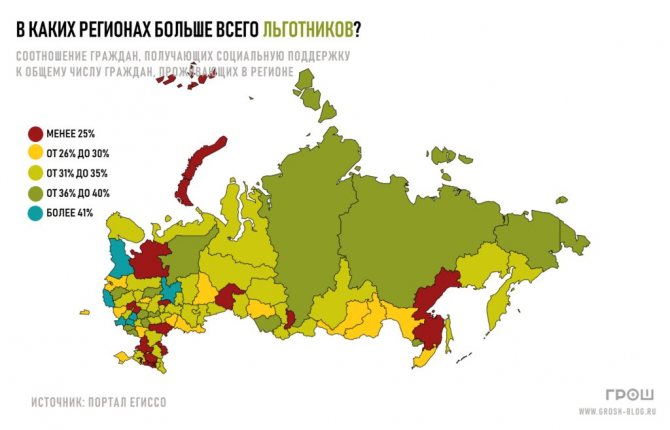
Percentage of benefit recipients to the rest of the region’s population according to the Unified State Health Information System portal as of May 2020.
Well, the fewest beneficiaries are in those regions where there are fewer pensioners or where young people come to work. Only 5% of beneficiaries are in the Tyumen region , 18% in the Khabarovsk Territory , 22% in the Arkhangelsk region . Unexpectedly, there were few beneficiaries in Ingushetia - only 22.4%. This is due to the fact that the share of pensioners in the region is very small - only 14.3%, while in many other regions there are more than 20% of the total population of pensioners.
In which regions do they spend more on beneficiaries than they earn?
In many regions of the country, the income of local budgets and funds is significantly lower than the amount that is spent annually on social benefits for the population. It is precisely to cover these costs that transfers from the federal budget are sent to the regions.
The Federal Treasury regularly publishes data on the revenues of the consolidated budgets of the constituent entities of the Russian Federation and the budgets of territorial state extra-budgetary funds, separately highlighting the column “tax and non-tax revenues”. In fact, this is the money that the subject managed to earn on his own without taking into account transfers from other budgets, which are transferred so that there is enough money for all payments.
If we compare these data with the indicators of regional expenditures on social payments, the picture will be as follows: in 57 constituent entities, a larger amount is spent on social payments than the amount of tax and non-tax payments received by the constituent entities. This is almost the entire Volga region, almost the entire Southern and North Caucasus federal districts, and many regions from the Central Federal District.
In some regions the difference is astronomical. For example, in Chechnya it is 4.28 times. The republic earned 16.3 billion rubles in 2020, and 69.9 billion rubles were spent on social support.
In Ingushetia, the difference is 2.95 times – budget revenues amounted to 5.1 billion rubles, and expenses – 15.2 billion rubles. In Dagestan, expenditures on social support exceeded regional income by 2.8 times.
Among other regions, it is worth highlighting the Bryansk region , Ivanovo region , Kurgan region , the Republic of Tyva , Chuvashia - in these regions, expenses are more than twice as high as budget revenues.
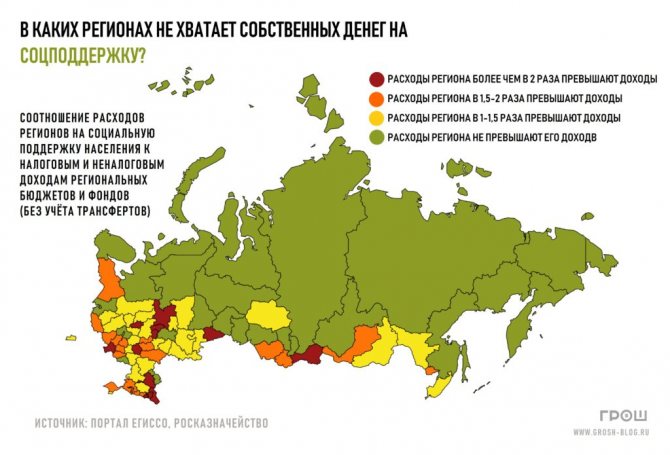
Another 6 regions, as they say, would make ends meet if they did not have transfers. The Murmansk , Kemerovo , Novosibirsk , Omsk , Belgorod , Irkutsk , and Arkhangelsk regions are on our map “in the green zone,” but their own incomes are only 10% or less higher than annual social support expenses. But besides social support, there are a lot of other areas where money is spent.
Under the current tax system, all of the listed regions are dependent on the federal center and without these payments they simply would not be able to exist, having declared a default.
Moscow and the Moscow Region , St. Petersburg and the Leningrad Region , the Tyumen Region , the Khanty-Mansi and Yamalo-Nenets Autonomous Okrugs , Yakutia , the Magadan Region , and the Sakhalin Region can feel confident without transfers .
Privileges for veterans of special risk units
Persons involved in nuclear weapons testing and liquidation of accidents with radiation exposure perform duties as part of the POR. Benefits for participants and disabled people of the ERP are equal to the preferences provided to the liquidators of the Chernobyl accident.
To receive payments and privileges, you must confirm participation in special operations and issue a veteran’s certificate. Disability is confirmed in the general manner by the ITU commission. Disabled persons from among the participants of the ERP, who have confirmed the relationship between the loss of health and the performance of duties, receive increased benefits as liquidators of the Chernobyl disaster. Particular attention is paid to supporting the families of ERP participants.
POR participants are paid benefits:
- Regardless of the presence of disability, EDV is provided in the amount of 2,701.62 rubles.
- Starting from February 2020, disabled people of group I receive benefits in the amount of 19,698.71 rubles, group II – 9,849.36 rubles, III – 3,939.72 rubles.
- Compensation for food costs in the amount of 942.12 rubles is provided to a veteran and each dependent, food costs for a child in a preschool educational institution in the amount of 231.48 rubles.
- In the event of the loss of a breadwinner, an annual payment in the amount of 314.05 rubles is provided, and a monthly benefit for disabled family members in the amount of 238.30 rubles.
Veterans' committees deal with the issues of participants in operations within the POR.
Answers to common questions
Question No. 1. How are benefits for labor veterans at the federal level determined?
Regardless of the level of veteran rank, privileges and payments are established by regional standards.
Question No. 2. Which category of federal beneficiaries receives the maximum payment?
Heroes of the USSR and heroes of Russia, holders of all Orders of Glory receive 63,708.25 rubles monthly. The payment is provided to heroes, and after death - to family members. The amount consists of several parts - the basic amount, additional amount, additional payment to the minimum pension, compensation.
Regional beneficiaries
These categories of citizens include:
- labor veterans;
- minor orphans;
- children deprived of parental care;
- large families;
- persons with the title of honorary donor;
- employees in the education system;
- medical workers;
Moreover, for the last two groups, benefits are provided only if they live and work in the countryside.
In addition to all of the above, certain benefits at the subject level are often provided by:
- single citizens whose age has exceeded 80 years;
- children under 18 months.
The list can be significantly expanded, but only after an appropriate decision by local authorities. They also determine the amount of compensation paid to each group of beneficiaries.
Social support in the regions is provided in various forms:
- free firewood for heating the house;
- discounts on utilities;
- monetary compensation for certain expenses.

